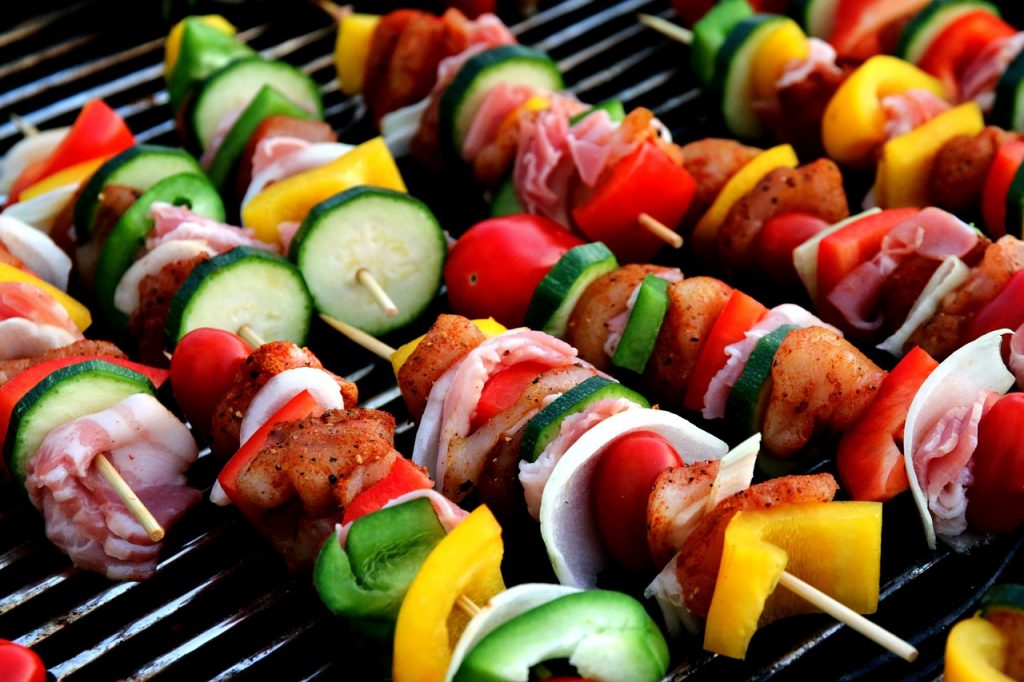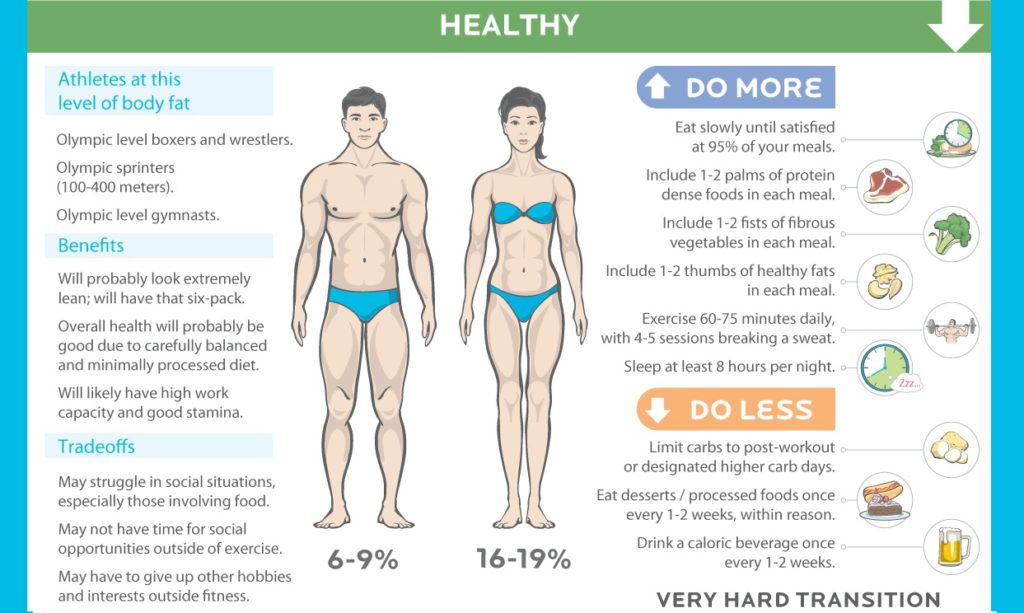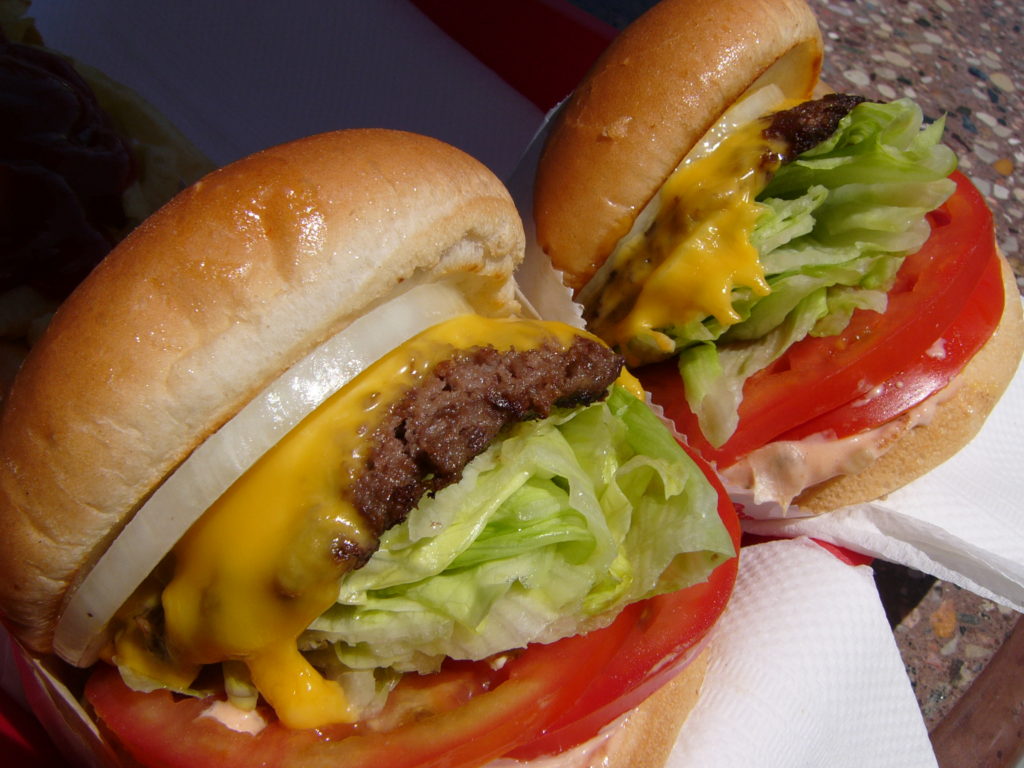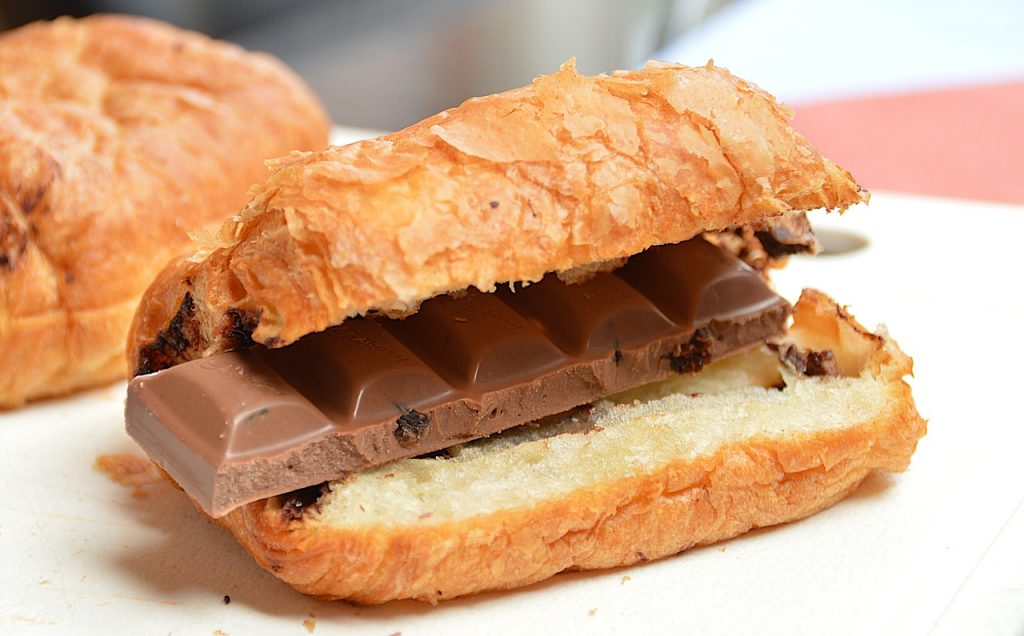N8’s Philosophy: How To Eat
For every food that exists, there’s a blog post somewhere talking about how eating it will make you fat, get cancer, or cause your genitals to fall off.
The internet is the Wild West of information, and just because everyone is losing their collective shit about coconut oil (or eggs, or salt, or gluten), doesn’t mean that we need to mindlessly hop on the bandwagon and swear off the demonized food of the month.
Here’s my super simple philosophy on eating that allows me to still occasionally indulge in ice cream and a burger while keeping visible abs all year round.

What to Eat
Eat whole, real foods 85% of the time.
Try to eat the “Green Faces” diet for the majority of your meals. This means that if it’s green (fruits/veggies/roots/tubers/whole grains) or had a face (meats/eggs) it should make up most of what you consume on a daily basis.
Your diet should be aimed at helping you feel and look your best, and while it’s possible to lose fat while sipping on Diet Cokes and eating low fat Triscuts, you wont feel great, and you’ll never look your best.
I mentally put food into categories based on the main macronutrient it is (mostly) made of. Here’s what you should be eating most of the time.
Carbohydrates: VEGGIES, Fruits, Potatoes, Sweet Potatoes, Rice, Oatmeal, Barley, Quinoa Squash
Necessary for energy, brain function, and high intensity activities
Fats: Wild Salmon, Nuts, Avocado, Healthy Oils (Olive, Avocado, Coconut)
Fuel for low intensity activity like walking, as well as hormone function and overall health
Protein: Grass Fed Beef, Free Range Chicken, Eggs, Wild Fish, Greek Yogurt, Kefir
Muscle building and recovery.
Tracking Food
You don’t need to do this forever, but you 100% ABSOLUTELY NEED to track your food for an extended period of time AT LEAST ONCE. I track for a month once per year to remind me of the nutritional value of food, and to help me reset.
You can track on mobile apps Like MyFitnessPal or LoseIt.
This is super important in order to get your PhD in your own body, and is critical to your nutritional development if you want to become Lean for Life.

Macros
A really popular dieting strategy recently is IIFYM or “If It Fits Your Macros”. This basically means that you are given a certain caloric limit, and then are required to eat a certain percentage of that limit in each macronutrient category.
This is a great plan, and most people with amazing physiques follow this in some fashion. I don’t prefer it all the time, because it requires constant meal tracking which can be a pain. That being said, here are the breakdowns of how you want to structure your macronutrient percentages.
Start by determining how many calories you need
To Lose Weight: Bodyweight x 12
To Maintain: Bodyweight x 14
To Gain Muscle: Bodyweight x16
Carbohydrates: Start by eating 1 gram per Lb of carbohydrates. The more weight you want to lose, and the more sedentary you are, the less carbs you need.
Don’t start by cutting carbs out completely as much as you might want to. Yes, it will give you fast results, but you’ll also be really tired and have low energy for your workouts. Much better to start with a moderate approach, see moderate results, and keep refining.
(simple version: eat 35% of your calories from carbs)
Protein: Start by eating one gram of protein per Lb of bodyweight. This is even a bit excessive, as studies show that you only need 0.88 grams per Lb to maximize your body’s ability to absorb it.
That being said, protein has the highest fat transformation cost of any nutrient, at 35%. This means that it’s expensive and not efficient to turn excess protein into fat stores.
(simple version: eat 40% of your calories from protein)
Fats: If you’re doing the maths version along with me, you can simply fill in the rest of your calories from Fat. This is an important macronutrient for you heart, skin, hair and eyes, as well as being an important part of hormone creation and delivery.
(simple version: eat 25% of your calories from fat)
Cheat Meals
If you’re eating great, nutritionally dense food 85% of the time, then you should be eating foods you enjoy 15% of the time. That doesn’t mean you need to crush 4 pieces of cake at every little kids birthday party (“I’m bulking bro!”), but it does mean that you can let your metaphorical hair down every so often and enjoy some pizza and ice cream.
If you’re just starting out nutritionally, you probably don’t need a cheat or “off plan” meal for the first month.

When to Eat
Let me just come out and say it. Eating 6 times per day is dumb. It’s hard to do, toting tupperware to your grandma’s sunday dinner doesn’t make you a fitness model, it makes you a dweeb.
Studies show that eating 8 times per day is no different than eating 2 times per day if th eoverall calories and macronutrients are the same. Additionally, eating that often means that you’re constantly digesting, and your body rarely enters Autophagy, our natural detoxification process.
I eat 2-3x per day. Ideally an hour before I workout, an hour after the workout, and then a big meal at night.
I use a modified Carb Cycling approach, which means I adjust how many carbs I take in on a daily basis depending on my workout. On days I don’t exercise, or do some low intensity walking, I take in fewer carbs becuase my energy demands are lower. On hard workouts (leg day) I take in more carbs post workout to help with recovery.
Carb Cycling – Use it to Your Advantage
Carb Cycling is one of the easiest way to ensure that you’re eating to your goals and energy requirements, while using a bio-hack to shuttle more of your calories to muscle and less to fat.
This works because after a workout your muscles are in need of fuel and replenishment, and so eating some simple carbs from rice/oats/fruit is a great way to increase your insulin, which helps in shuttling more nutrients to your hungry muscle cells.
An ideal day would look something like this:
AM: Proteins + Fats + Veggies. One of my favorite breakfasts is chicken thighs and almonds. It’s savory, and chicken thighs reheat easily.
Another good option is eggs and bacon on a bed of spinach.
Lunch: Proteins + Fats + Veggies. More of the same, but free to switch up the type of food.
Pre Workout: Proteins + Fruit. Something that’s easy to digest and will give you energy for your training session. I like plain greek yogurt with banana or berries. Throw some protein powder in if you’re looking for ways to get more protein in your diet.
Post Workout: Proteins + Starchy Carbs/Fruits. I prefer to get a meal or shake within an hour of training. A good shake is 2:1 protein powder to oatmeal, with a piece of fruit thrown in.
If you’re looking to lose fat, keep the fruit, lose the starch.
Dinner: Protein + Starchy Carb. This comes on the back-end of our day of training, and is important for building muscle and sleeping well.
Have you ever had a high carbohydrate lunch, and suddenly regardless of all the 5 Hour Energy you drank, you can’t keep your eyes open at 2pm?
A meal higher in starchy carbs can increase the feelings of sleepyness as your body works to digest the food. That’s why I don’t shy away from higher carb meals at night, because they can help aid in getting a restful night sleep.

Starting a “Diet”
When starting a diet or trying to lose weight for the first time, I often caution people against “doing too much”. It can be tempting to throw everything in right away: Whole 30 diet, eliminating all carbs, doing a detox, etc.
It’s better though to start off with smaller actionable items. Make these things a part of your life and build a foundation off of them.
The first priorities should be:
- Getting Enough Water
- Sleeping 7-9 hours
- Minimizing Stress
- Tracking Calories
After this then we can add in different dietary protocols, supplements and work on fine tuning your diet to match your lifestyle.
Listen: every diet works. That’s why there are testimonials for The DASH Diet, The Atkins Diet, Lo-Carb, Slow, Carb, Ketogenic, Intermittent Fasting, etc.
The key is finding the diet that matches your goals, lifestyle, and current abilities. But all weight loss works by creating a caloric defect. So stop searching for the magic pill, and start trying to ruthlessly execute the basics.





